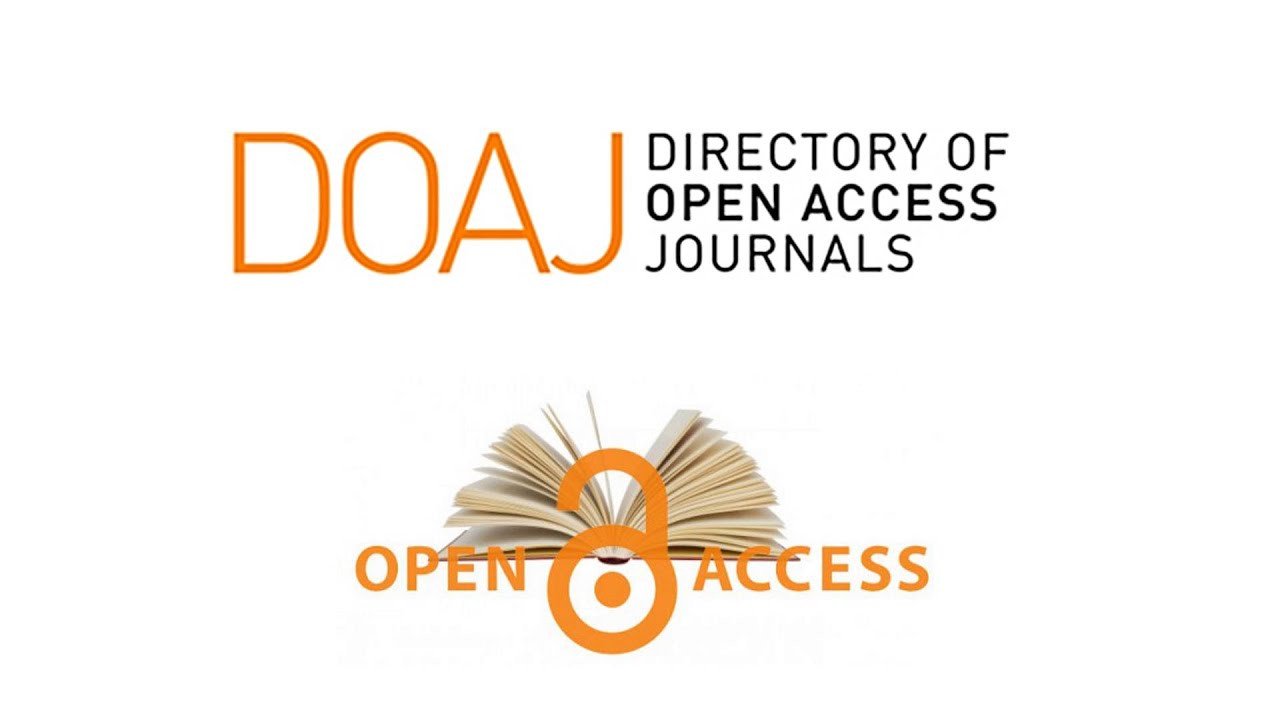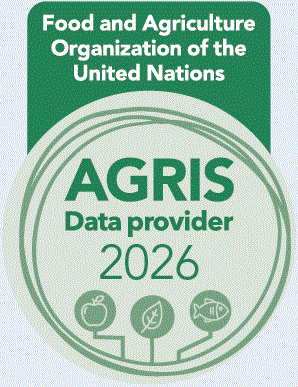Macro-invertebrates response to acute salinity changes in the Shatt Al-Arab River system, Southern Iraq
DOI:
https://doi.org/10.58629/ijaq.v17i1.427Keywords:
abundance, macro-invertebrates, salinity, Shatt Al-Arab riverAbstract
The stress of acute salinity increase on the life of macro-invertebrates in Shatt Al-Arab River system were investigated based on their abundance estimation acute salinity increase during the year 2018,where the salinity of the River at central, Basrah City became above 5 ppt and reached up to 25 ppt. Review work was done to determine the sizes and densities of the species during the normal conditions in past decades (1975-1995). The results of observations, photography and semi-quantitative sampling which were taken during many visits in the years 2012, 2015, 2016, 2016, 2017, 2018, 2019 and 2020 at Al-Salhia, Abo Al-Kassib, Al-Garmma and Al-Gurnah, were expressed in an ordinal six abundant scales (SACFOR), modified for species sizes and densities. All the species were have superabundance or common scale during the period 1975-1995, whereas at 2018-2020 the abundance of all species except M. affinis, were declined in general, 7 species were absent and 3 more were rare. The amphipods Parhyale basrensis, Platorchestia monodi, the isopod Sphaeroma annandalei and the annelid Namalycastis indica were commonly or frequently found at good state indicating their ability to resist the mesohaline conditions, the euryhaline species M. affinis and B. amphitrite weren’t affected. The study concluded that, in case of long term mesohaline conditions, most of the estuarine macro-invertebrates will be unable to persist and may be shifting to the upper reaches of the River.Metrics
References
Al-Taei, S. A.; Abdulla, S. S., Lafta, A. A. and Al-Fartosi, A. J. (2020). Physical properties review of previous studies numerical modeling. In: Shatt Al-Arab-the future of Basrah, regulatory Barrage and environmental impact. Ali, M. H. (eds.), University of Basrah, Basrah, 24-39. (in Arabic).
Abdullah, S. B. (1996). Ecological study and population dynamic of two gastropods in the intertidal zone Melanopsis nodosa Ferussac and Melanoides tuberculata (Müller), at Southern Iraq. Ph.D. Thesis, College of Science, Basrah Univ., pp 122.
Abdullah, A. D.; Karim, O.F.A.; Masih, I.; Popescu, I and Van der Zaag (2016). Anthropogenic and tidal influences on salinity levels of the Shatt Al-Arab River, Basrah, Iraq. International journal of River Basin Management, 14(3): 357-366.
Abdullah, S. B.; Saoud, K. D. and Ageel, S. G. (2015). Population dynamics of the fresh water SHRIMP Caridina babaulti basrensis (Decapoda, atyidae) from Garmat-Ali River, Iraq, Hawlyat Al-Montada, 1(2): 3-11.
Abdul-Sahib, I. M., Salman, S.D. and Ali, M. H. (2019). Oxygen consumption and energy budget of the barnacle Balanus amphitrite amphitrite (Darwin, 1824) of an estuarine ecosystem, Basrah, Iraq. Mesopot. J. Mar. Sci., 34(2): 126-141.
Abdul-Sahib, I. M., Salman, S.D. and Jassim, A. K. (1995). Population dynamics and secondary production of the Asiatic calms Corbicula fluminea and Corbicula flumenalis (Müller), in the Shatt Al-Arab River System, Basrah, Iraq Marina Mesopotamica 10(1); 1-25.
Abdul-Sahib, I. M., Salman, S. D. and Ali, M. H. (2003). Population dynamics of the barnacle Balanus amphitrite amphitrite Darwin (Crustacea: Cirripedia) at Garmat Ali, Basrah, Iraq. Marina Mesopotamica,18(1): 55-76.
Ahmed M. M. (1975). Systematic study on Mollusca from Arabian Gulf and Shatt Al-Arab. Center for Arab Gulf studies, Basrah Univ. Iraq,; 75 pp.
Al-Adhub, A.H. Y. (1987). On a new sub species of freshwater shrimp (Decapoda, Atyidae) from the Shatt Al-Arab River, Iraq. Crustaceana 53(1): 1–4. DOI: https://doi.org/10.1163/
Al-Adhub, A.H. Y. and Hamzah, H. A. (1987). Caridina babaulti basrensis Subs nov. from Shatt Al-Arab region, Iraq (Decapoda, Atyidae), Crustaceana, 52(3): 225-228.
Al-Badran, B. (2004). Delta of River Shatt Al-Arab south of Iraq. Marina Mesopotamica, 19(2): 311-322.
Al-Dabbagh, K. Y. and Daoud, Y. T. (1985). The ecology of three gastropod mollusks from Shatt Al-Arab. Journal of Biological Sciences Research 16(2): 155-168.
Al-Handal, A. Y. (2009). Littoral diatoms from the Shatt Al-Arab estuary, North west Arabian Gulf. Cryptogamie, Algol, 30(1); 153-183.
Al-Mayah, A. A. and Al-Asadi, W. M. (2018). The impact of increase salinity on the aquatic plant assemblage in Shatt Al-Arab river. Marsh Bulletin, 13(2): 74-86.
Al-Mayah, A. A.; Al-Edani, T. Y. and Al-Asadi, W. M. (2016). Ecology and flora in Basrah. 688 pp.
Ali, M. H. (2001). The energy gains and energy losses by the intertidal amphipod Parhyale basrensis from the Shatt Al-Arab region. Marina Mesopotamica, 16(1): 141-159.
Ali M. H. (1979). Studies in the ecological behavior of the crab Sesarma boulengeri Calman, from Shatt Al-Arab. M. Sc. Thesis College of Science, Basrah Univ.,PP
Ali, M. H. (1989). Population dynamics and bioenergetics of the fresh water hyminosomatid crab Elamenopsis kempi (Chopra & Das), in Basrah. Ph.D. thesis, College of Science, Basrah Univ.
Ali, M. H. and Salman, S. D. (1986). The reproductive biology of Parhyale basrensis Salman (Crustacea: Amphipoda) in the Shatt Al-Arab River. Estuarine Coastal and Shelf Science, 23, 339-351.
Ali M. H.; Salman S. D. and Al-Adhub, A.H. Y. (1995). Population dynamics of Hyminosomatid crab Elamenopsis kempi in the brakish subtidal region of Basrah, Iraq. Science Marina 59, 1-13.
Ali, M. H.; Al-Mudaffar, N. A.; Mohammed, H. H. and Ahmed, H. K. (2017). Poster of Microinvertebrates of Shatt Al-Arab (II) Mollusca, DOI: 10.13140/RG.2.2.33098.67523.
Al-Mahmood, H. K. (2020). Referential analysis of discharge and salinity data in Shatt Al-Arab River. Iraqi Journal of Aquaculture 17(1): 11-26.
Al-Maliky, J. H. (2012). Analysis of water quality and the impact of the salt wedge of the Arabian Gulf on the Shatt Al-Arab River. A Thesis of MSc. Queensland, Australia.
Al-Mudaffar, N. A.; Ahmed, A. N.; Jasim, A. A.; Dawood, A. S. and Al-Mukhtar, S. A. (2018). Chemical water quality. In: Shatt Al-Arab-the future of Basra, Technical Report, Marine Science Center, University of Basrah, Iraq. (in Arabic). 229 pp.
Al-Ramadan, B. and Pastour, M. (1987). Tidal characteristic of Shatt Al-Arab River. Marina Mesopotamica, 2(1): 15-28.
Antonio, E. S.; Kasai, A.; Veno, M.; Ashihi, Y.; Yokoyama, H. and Yamashita, Y. (2012). Special and temporal feeding dynamics of benthic communities in an estuary marine gradient. Estuarine Coastal Shelf Science, 112, 86-97.
Belal, A.A. M.; El-Sawy, M. A. and Dar, M. A. (2016). The effect of water quality on the distribution of macro-benthic fauna in western Lagoon and Temsah Lake Egypt, The Egyptian Journal of Aquatic Research. Vol. 42(4): 437-448.
Brandimarte, L.; Popescu, I. and Neamah, N. K.(2015). Analysis of fresh-saline water interface at the Shatt Al-Arab estuary. International journal of River Basin Management, 13(1): 17-25.
Elliot, W. and David, K. (2017). Restore or retreat ? saltwater intrusion and water management in coastal wetlands, Ecosystem Health and Sustainability, 3: 1, Doi: 10.1002/ehs2.1258.
Falco, S.; Niencheski, L. F., Rodilla, M.; Gonzalez Del Rio, J. and Mösso C. (2010). Nutrient flux and budget in the Ebro Estuary, Estuarine Coastal Shelf Science, 87(1): 92-102.
Fujii, T. (2012). Climate change Sea-Level Rise and implications for coastal and estuarine shoreline Management with particular reference to the ecology of intertidal benthic macrofauna in north west Europe, Biology. 1, 597-616.
Geetha, P. M.; Thasneem, T. A. and Nadan, S. P. (2010). Macrobenthos and its relation to ecosystem dynamics in the Cochin estuary.
Hiscok, K. (1998). In situ survey of intertidal biotopes using abundance scales and checklists at exact locations (ACE),. Version 1 of 23 March In: Biological monitoring of Marine special areas of conservation: a hand book of methods for detecting changes. Part 2 procedual guidelines (ed. Hiscotik, K.), 3 pp. Peterborough, joint Nature conservation committee.
Idrisi, N. and Salman, S. D. (2005). Distribution, development and metabolism of larval stages of warm water shrimp, Caridina babulti basrensis (Decapoda, Atyidae). Mar. Fresh. Behav. Physiol, (38): 31-42.
Izegaegbe, J. I; Vevier, L. and Mzimela, H. M. M. (2020). Macrobenthic community structure of the Mhlathuze Estuary, a permanently open estuarine embayment in Kwazulu-Natal, South Africa. African Journal of Aquatic Science. 45(1-2): 95-107.
Kefford, B. J.; Papus P. J. Nugegoda, D. (2003). Relative salinity tolerance of macroivertebrates from the Barwon River, Victoria, Australia. Marine and Freshwater Research, 54(6): 755-765.
Li, B. and Morrison, R. J. (2011). Analysis of macrobenthic assemblage of Illawarra, New South Wales, Australia. Transit, Water Bull, n.2, 11-20.
Little, S.; Wood, P. and Elliot, M. (2017). Quantifying salinity-induced changes on estuarine and benthic fauna: the potential implications of climate change estuarine, Coastal and Shelf Science 198. 610-625.
Mackay, C. F. and Cyrus, D. P. (1998). A review of macrobenthic fauna of the Mhlathuze Estuary: setting the ecological reserve Southern African Journal of Aquatic Science, 24(1-2): 111-129.
McLusky, D. S. and Elliot, M. (2005). The estuarine ecosystem. Oxford University press, Oxford. (An accessible and readable guide to the estuarine ecosystem and the interactions between Science and management)
Potapora, M. (2011). Patterns of diatoms distribution in relation to salinity. In: The diatoms of world. Publisher: Springer. Editors; Seckbach, J. and J. P. Kocloiek.
Rabie, A. K. A. S. (1986). The ecology of two species of Pluminate snails Lymnaea auricularia (L.), Physa acuta Draparnaud in Shatt Al-Arab River. M. Sc. Thesis, University of Basrah, Iraq.
Salman, S. D.; Hamxah, H. A. and Ali, M. H. (2018). On the reproductive biology of the talitrid amphipod Platorchestia monodi (Mateus et al.,1986) from the Shatt Al-Arab region, Basrah, Iraq. Iraqi Journal of Aquaculture, 15(1): 78-102.
Salman, S. D.; Ali, M. H. and Al-Adhub, A.H. Y. (1990). Abundance and seasonal migration of the penaeid shrimp Metapenaeus affinis (H. Milen and Edwards) within Iraqi waters. Hydrobiologia, 196: 79-90.
Salman, S. D.; Oshana, V. K. and Ali, M. H. (1996). Life cycle and population dynamics of Annina mesopotamica (Ahmed), (Isopoda: Flabellifera), in the Shatt Al-Arab region, Basrah, Iraq. Hydrobiologia 330, 119-130.
Saoud, K. D. (1987). Population dynamics, secondary production and swimming behavior of Sphaeroma annandalei annandalei Stebbing 1911, M. Sc. Thesis, College of Science, Basrah Univ.
Saoud, K. D. (1997). A comparative ecological study of two isopods crustaceans Annina mesopotamica and Sphaeroma annandalei annandalei in the Shatt Al-Arab Region, Iraq. Ph. D. Thesis. College of Science, Basrah Univ.
Sarker, J.; Tanmay, M. H.; Rahman, F.; Ptwary, M. S. A. and Rima, N. N. (2016). Assessment of coastal water pollution In Greater Noakhali- Bangladesh. Journal of Coastal Zone Management, 19:427. doi:10.4172/2473-3350.1000427
Snoeijs, P. I. and Weckstrom, K. (2010). Diatoms and environmental change in large brakish-water Ecosystem. In: The diatoms: Applications for environmental and earth science. Publisher; Cambridge University Press, Cambridge. Eds: Smol, J. P. and E. F. Stoermer.
Solan, M. and Nia, M. (eds.) (2016). Stressors in the Marinr Environmental. Publisher: Oxford University Press, 384 pp.
Stark, J. D. (1998). SQMCI: A biotic index for freshwater invertebrate coded-abundance data. New Zealand Journal of Marine and Freshwater Research 32:1, 55-66.
Strong, J. A. and Johnson, M. (2020). Converting SACFORdata for statistical analysis: Validation, Demonstration and further possibilities Marine Biodiversity Records 13(2): 1-18.
Sultan, E. N. (1987). Pupulation dynamics, secondary production and burrowing behavior of Sesarma boulengeri Calman, in Shatt Al-Arab. M. Sc. Thesis College of Science, Basrah Univ.
Sultan, I. N.; Abed, J. M. and Ahmed, N. S. (2017). Population biology and production dynamic of Namalycastic indica (Southern, 1921) in two habitats in the Shatt Al-Arab. Journal of Basrah Research Science, B, 2 (43):
Watanabe, K.; Kasai, A.; Antonio, E.; Suzuki, K.; Ueno, M. and Yamashita, Y. (2014). Influence of salt-wedge intrusion on ecological processes at lower trophic level in the Yura Estuary. Japan estuarine, coastal and shelf science, vol. 139, 67-77.
Weston, N. B.; Vile, N. A.; Neubauer, S. C. and Velinsky, D. J. (2010). Accelerated microbial organic matter mineralization following salt-water intrusion into tidal freshwater marsh soils. Biogeochemistry, 102, 135-151.
Wilson, J. G. (2002). Adaptation to life in Estuaries. In: Encyclopedia of life support systems (EOLSS) Publisher: Paris, France: UNISCO, (EOLSS).
Downloads
Published
How to Cite
Issue
Section
License
Copyright (c) 2023 Iraqi Journal of Aquaculture

This work is licensed under a Creative Commons Attribution 4.0 International License.










